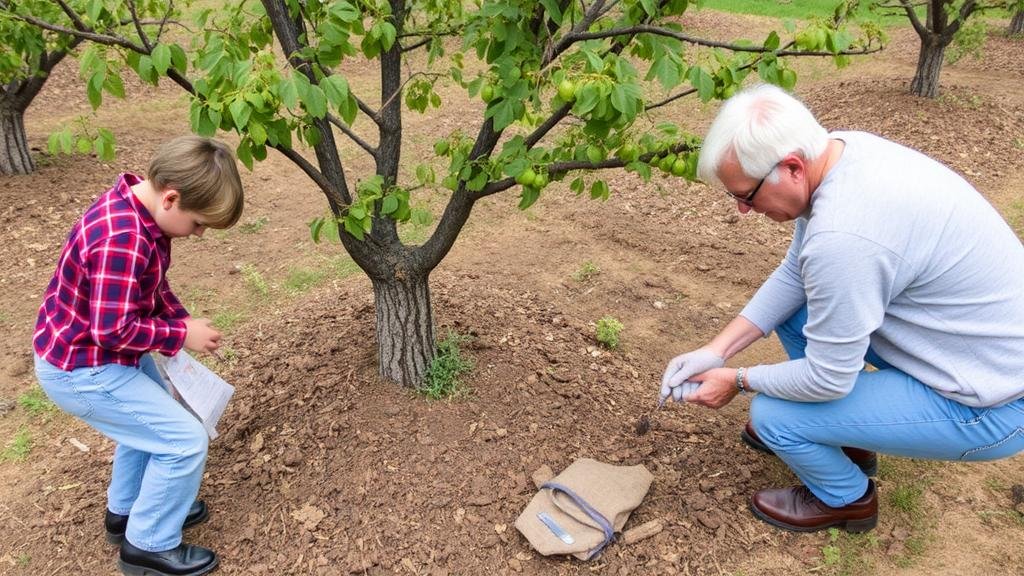Exploring Historical Orchard Plans for Agricultural Artifact Finds
Exploring Historical Orchard Plans for Agricultural Artifact Finds
This article examines the historical orchard plans as a vital source of information for discovering agricultural artifacts. Orchards have long been a central aspect of agricultural practices, reflecting both the cultural and economic history of various regions. Analyzing historical orchard documentation can provide insights into past agricultural practices and yield significant archaeological finds.
Introduction
The study of historical orchards offers a unique lens through which researchers can understand the evolution of agricultural practices. Orchards represent not only a component of local food systems but also a historical record of land use and management strategies. With the increase in archaeological excavations in former orchard sites, there is a growing need to explore how these historical plans inform archaeological findings.
The Importance of Historical Orchard Plans
Historical orchard plans serve multiple purposes in agricultural archaeology. They provide information about:
- Crop selection and diversity
- Land management techniques
- Environmental adaptation strategies
For example, plans from early 19th-century orchards in the United States, such as those documented in the United States Department of Agriculture archives, illustrate the transition from subsistence farming to more organized commercial practices. e shifts reflect broader social changes and economic adaptations, particularly in areas heavily impacted by industrialization.
Case Studies
Several case studies demonstrate the significance of historical orchard plans in uncovering agricultural artifacts:
Case Study 1: The Monticello Orchards
Thomas Jefferson’s Monticello estate in Virginia is a prime example of an early American orchard. Jefferson maintained extensive records of his horticultural experiments, including the introduction of various fruit species. Excavations of the Monticello orchards have uncovered tools such as shovels and pruning shears, alongside remnants of apple and peach pits, revealing the diversity of crops planted during Jeffersons lifetime (1767-1826). e artifacts provide tangible evidence of the agricultural innovations championed by Jefferson and the preferences for certain fruit varieties.
Case Study 2: The Historic Fruit-growing Areas of California
California’s Central Valley orchards, established by immigrant farmers in the late 19th century, are another illustrative example. Historical plans show the introduction of crops such as almonds and walnuts, which later became significant export products. Archaeological surveys in these areas have uncovered irrigation systems such as the pioneering flume canals of the 1880s, demonstrating advanced water management techniques that allowed for successful commercial orcharding.
Methodology for Investigating Historical Orchards
The investigation of historical orchards involves several analytical methodologies:
- Documentary Analysis: Review historical documents, including agricultural plans, letters, and diaries.
- Field Archaeology: Conduct excavations based on historical maps to identify potential artifact finds.
- Environmental Studies: Analyze soil samples and pollen records to reconstruct the agricultural environment.
By combining these methodologies, researchers can create a comprehensive picture of historical agricultural practices and their impact on current landscapes.
Challenges and Considerations
While the study of historical orchard plans is promising, it is not without challenges. Some of the notable considerations include:
- Preservation of Artifacts: Many orchard sites have been altered or destroyed due to urbanization.
- Documentation Quality: Records may be incomplete or biased, affecting the interpretation of historical practices.
Addressing these challenges requires interdisciplinary collaboration, involving historians, archaeologists, and environmental scientists to develop a more nuanced understanding of agricultural history.
Conclusion
Exploring historical orchard plans is essential for preserving agricultural heritage and understanding the evolution of farming practices. By studying these records and their associated artifacts, researchers can uncover crucial information about past agricultural systems, enhance contemporary sustainable practices, and promote awareness of the historical significance of orchards in agricultural development.
As agriculture continues to evolve, it is imperative that these historical insights remain part of the broader discourse on sustainability and land management. Continued archaeological and documentary research will be key to unlocking the stories held within our orchards.



